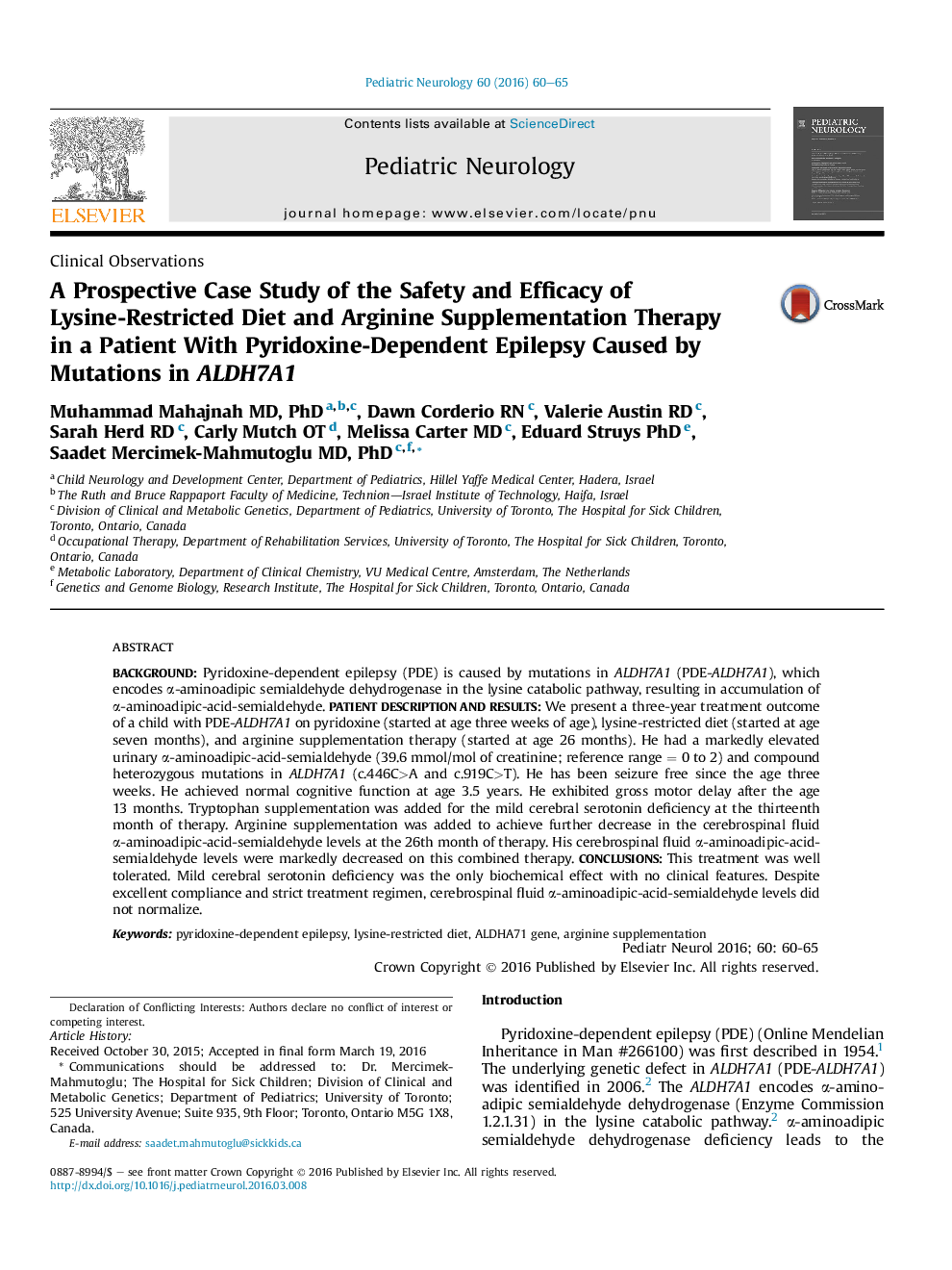| کد مقاله | کد نشریه | سال انتشار | مقاله انگلیسی | نسخه تمام متن |
|---|---|---|---|---|
| 3084283 | 1581266 | 2016 | 6 صفحه PDF | دانلود رایگان |
BackgroundPyridoxine-dependent epilepsy (PDE) is caused by mutations in ALDH7A1 (PDE-ALDH7A1), which encodes α-aminoadipic semialdehyde dehydrogenase in the lysine catabolic pathway, resulting in accumulation of α-aminoadipic-acid-semialdehyde.Patient Description and ResultsWe present a three-year treatment outcome of a child with PDE-ALDH7A1 on pyridoxine (started at age three weeks of age), lysine-restricted diet (started at age seven months), and arginine supplementation therapy (started at age 26 months). He had a markedly elevated urinary α-aminoadipic-acid-semialdehyde (39.6 mmol/mol of creatinine; reference range = 0 to 2) and compound heterozygous mutations in ALDH7A1 (c.446C>A and c.919C>T). He has been seizure free since the age three weeks. He achieved normal cognitive function at age 3.5 years. He exhibited gross motor delay after the age 13 months. Tryptophan supplementation was added for the mild cerebral serotonin deficiency at the thirteenth month of therapy. Arginine supplementation was added to achieve further decrease in the cerebrospinal fluid α-aminoadipic-acid-semialdehyde levels at the 26th month of therapy. His cerebrospinal fluid α-aminoadipic-acid-semialdehyde levels were markedly decreased on this combined therapy.ConclusionsThis treatment was well tolerated. Mild cerebral serotonin deficiency was the only biochemical effect with no clinical features. Despite excellent compliance and strict treatment regimen, cerebrospinal fluid α-aminoadipic-acid-semialdehyde levels did not normalize.
Journal: Pediatric Neurology - Volume 60, July 2016, Pages 60–65
